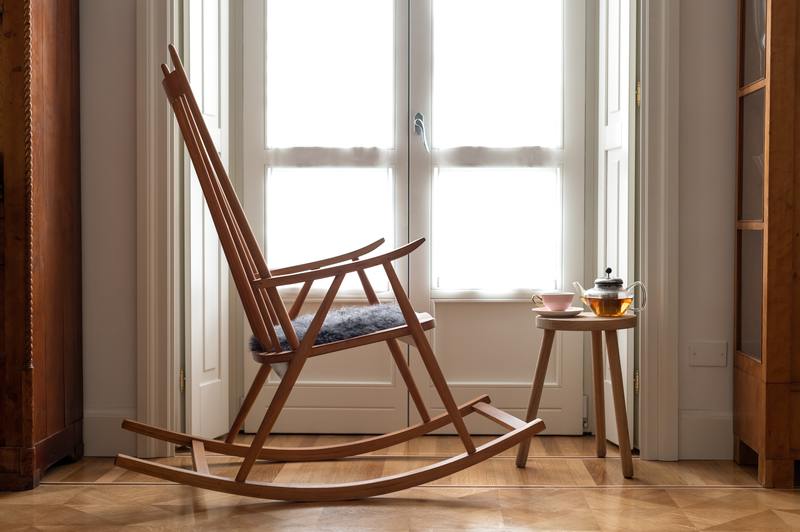Knowing how to tell the age of rocking chair is an excellent skill for potential buyers and antique enthusiasts. Finding out how old a rocking chair is — or any furniture for that matter — is not an easy task. Determining a furniture’s age involves examining the timber used, comparing the style of the chair to different eras, and looking for any marks or seals that could give hints to the year of manufacturing, among other things.
Despite the inherent difficulty, determining the age of the rocking chair will be highly beneficial, especially for those looking to sell possible antiques. You could sell your authentic antique rocking chair for a price ranging from $100 to $3,000.

Are you looking to put a price tag on your potentially authentic rocking chair, or do you just want to see how old your rocking chair is? Continue reading to find out all there is to know about estimating the age of your rocking chair!
Finding The Age Of A Rocking Chair
Checking for the exact age of antique furniture will require the aid of a professional. Professionals and antique enthusiasts have the necessary experience and tools that help them determine an object’s age with accuracy. However, we everyday citizens can make our own estimates based on our observation skills, deductive reasoning, and a bit of historical knowledge.
Look for the markings
Rocking chair manufacturers usually put their company name, year of production, and other information on the chair. Inspect the underside of the chair, the backrest, and the spindles for any sign of a company’s stamp.
The practice of putting company marks on rocking chairs became commonplace in the 18th century. However, the absence of a mark does not automatically mean that your chair is older or authentic. The ink or the carving made by the manufacturer may have simply come off due to age, wear and tear.
Check the wood
Furniture manufacturers had different preferences when it came to timber for their products. These preferences often stem from the trends of their time or the availability of the wood.
While determining the type of wood used in your chair is difficult if you are not used to the practice, you could profit the most by doing so. Identifying the wood used gives you the most significant insight as to the date of your furniture’s creation.
Oak and walnut wood shows that the rocking chair in question was made in the 1700s. On the other hand, mahogany may show that your rocking chair is from the late 1700s to the early 1800s. Rosewood, cherry wood, or maple wood could indicate that your furniture was created from the late 1800s onwards.
Aside from checking the timber used, you could also check if your chair is handcrafted or machine-made. Handmade rocking chairs have slight imperfections, such as uneven surfaces and jagged marks. The existence of flaws points towards the chair being made before the 1860s, where manufacturers and companies prevalently used machinery and circular saws.
Look at the style
The style of the rocking chair could also point to the era of the chair’s creation. Since Benjamin Franklin first made the rocking chair in America, the American Hitchcock style denotes that your furniture was made in the 1700s to 1800s.
The Hitchcock style of rocking chairs is lightweight and has a straight body compared to other styles. American rocking chairs were also commonly painted.
The English created the Windsor style, which was first made in 1720 but became prevalent in the 1800s in Britain. The Windsor rocking chair was based off of the American Hitchcock but is more elegant in design, curvier, and light to medium in weight. English manufacturers often sold their Windsor rocking chairs without finishes.
Michael Thonet made the German Bentwood design in the 1860s. They are heavy rocking chairs, with armrest pads and the sides made as one piece.
Determine the finish
Different cultures and times had different trends when it comes to finishing a piece of furniture. These types of finishes, combined with the design, could further shed light on the year and the place of the chair’s creation. Americans painted their rocking chairs before selling, while the English only smoothed them out then left them unfinished.
If your rocking chair has varnish or lacquer, it means that the chair was made in the mid-1800s, where the use of either became popular. However, sellers also finished their rocking chairs with shellac, oil, or wax. Of course, the use of these products does not automatically indicate that your chair is an authentic antique piece.
Conclusion
There are many things that could point towards the year of your rocking chair’s creation. From the materials to the design to even the finish used. Without any solid marks or significant stamps made by the creator, it is nearly impossible to determine without professional help the exact year of the chair’s making.
Nevertheless, with knowledge and a bit of creative thinking, we can come very close to knowing how to tell the age of rocking chair. The antique’s creation could even unravel the story behind something as timeless yet straightforward as a simple chair.
